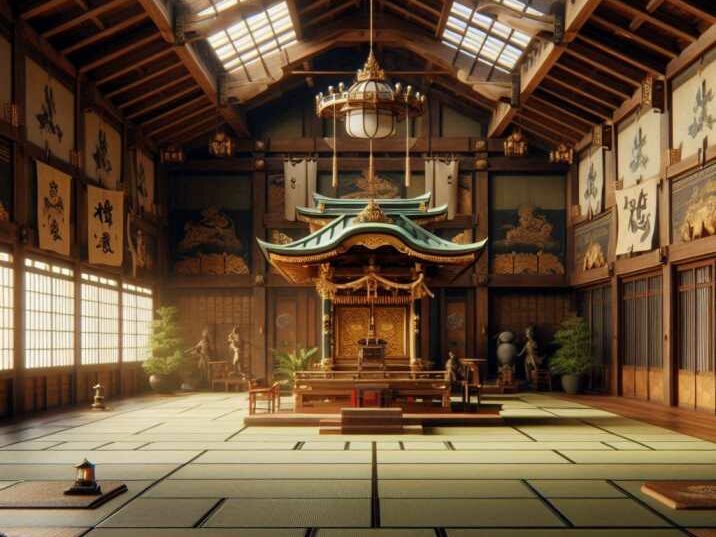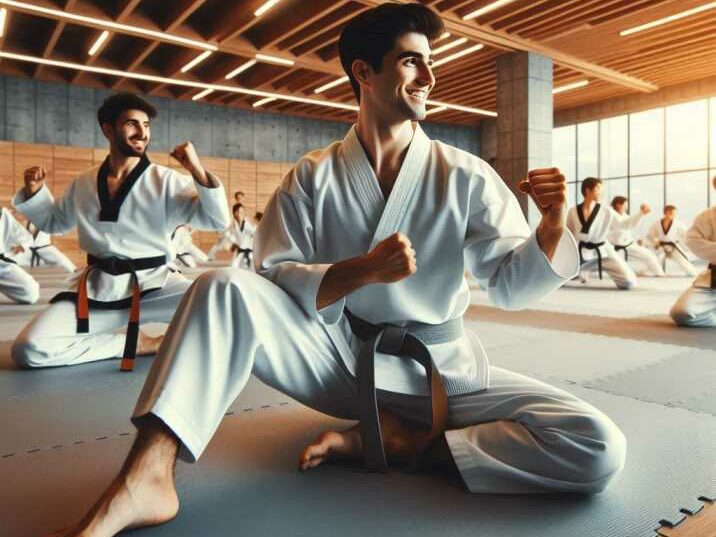Introduction
Table of Contents
Ever wondered what martial arts schools are called and why they go by such unique names? If you’re a fan of martial arts or thinking about enrolling in a class, understanding the terminology can enrich your experience. In this blog post, we’ll unravel the mystery behind the names, explore the cultural significance, and offer tips for finding the right martial arts school for you.
You’ll discover various types of martial arts schools, each with its own distinct name and tradition. From dojos to kwoons, each term reflects the history and philosophy of the martial art it represents. Let’s take a deep dive into the fascinating world of martial arts schools.

What is a Dojo?
The Origin of the Dojo
The word “dojo” is Japanese and translates to “place of the way.” Traditionally, a dojo is a space for martial arts practice, particularly for Japanese martial arts like Karate, Judo, and Aikido. The concept of a dojo extends beyond just a physical space; it embodies the spirit and discipline of martial arts training.
Dojo architecture often includes features like tatami mats, wooden floors, and Shinto shrines to create a serene environment conducive to learning and meditation. The ambiance is designed to instill a sense of respect and focus among students.
The Dojo Etiquette
In a dojo, etiquette is paramount. Students bow upon entering and leaving the dojo, a sign of respect for the space and their instructors. The bowing ritual also symbolizes humility and readiness to learn, essential qualities for any martial artist.
Students also follow a strict hierarchy, showing respect to those with higher ranks. This system instills discipline and helps maintain order during training sessions. Knowing and following these customs is crucial for anyone stepping into a dojo.
The Role of the Sensei
The term “Sensei” means “one who came before” and refers to the instructor or teacher in a dojo. The sensei is not just a coach but also a mentor and guide, responsible for imparting both technical skills and the philosophical teachings of the martial art. Their role is pivotal in shaping the character and abilities of their students.
Senseis lead by example, demonstrating techniques and correcting students’ forms. They also instill the principles of martial arts, such as respect, discipline, and perseverance, ensuring that students grow both physically and mentally.
Exploring the Dojang
The Korean Dojang
In Korea, martial arts schools are known as “dojangs.” This term is used primarily for Taekwondo and Hapkido schools. Like dojos, dojangs emphasize respect, discipline, and a structured learning environment.
A typical dojang features a clean, open space with mats for safe practice. The walls often display flags, motivational quotes, and pictures of prominent martial artists, creating an inspiring atmosphere for students.

The Dojang Culture
Dojang culture places a strong emphasis on community and mutual support. Students train together, help each other improve, and celebrate each other’s achievements. This sense of camaraderie fosters a positive and encouraging environment, making the learning experience enjoyable and rewarding.
Instructors, known as “Sa Bum Nim,” play a crucial role in maintaining this culture. They encourage students to push their limits while providing the necessary support and guidance to ensure their success.
Ranking and Progression
Just like in dojos, dojangs have a ranking system, usually indicated by colored belts. Each belt represents a level of proficiency and knowledge in the martial art. Students progress through these ranks by demonstrating their skills and understanding of techniques during formal testing sessions.
Achieving a black belt is a significant milestone, symbolizing not just technical expertise but also a deep understanding of the martial art’s philosophy. However, the learning doesn’t stop there; black belts continue to refine their skills and take on mentoring roles within the dojang.
The Art of the Kwoon
The Chinese Kwoon
In Chinese martial arts, schools are often referred to as “kwoons.” This term is commonly associated with Kung Fu and Wing Chun. The kwoon is more than just a training hall; it’s a place where traditional values and martial arts techniques are passed down through generations.
Kwoon architecture varies widely, from simple rooms to elaborate spaces adorned with ancient weapons and scrolls. These elements reflect the rich history and cultural heritage of Chinese martial arts, creating a unique learning environment.
The Kwoon Philosophy
Kwoon philosophy emphasizes the holistic development of students. Training focuses not only on physical techniques but also on mental discipline and moral values. Students are taught to respect their art, their instructors, and their fellow practitioners.
Traditional Chinese martial arts often incorporate elements of Taoism and Buddhism, promoting balance, harmony, and inner peace. These philosophical teachings are integral to the training process, helping students cultivate a well-rounded character.
The Role of the Sifu
The term “Sifu” means “teacher” or “master” and is used to address instructors in a kwoon. The Sifu is a respected figure, often seen as a wise and experienced mentor. Their role extends beyond teaching techniques to include guiding students on their personal and martial arts journeys.
Sifus lead by example, embodying the principles and values of their martial art. They provide personalized instruction, helping each student develop their unique strengths and overcome challenges.
Finding the Right Martial Arts School
Identifying Your Goals
Before choosing a martial arts school, it’s important to identify your goals. Are you looking to improve your fitness, learn self-defense, or immerse yourself in a new culture? Understanding your objectives will help you find a school that aligns with your interests.
Consider what aspects of martial arts appeal to you the most. Do you prefer striking techniques, grappling, or weapon training? Knowing your preferences will guide you towards a school that offers the right type of training.
Research and Reviews
Do your homework before committing to a martial arts school. Read reviews, visit websites, and talk to current students. Most schools offer trial classes, allowing you to experience the training environment and see if it suits your needs.
Pay attention to the school’s reputation and track record. Look for schools with experienced instructors, a supportive community, and a focus on safety and respect.
Taking the First Step
Once you’ve found a school that interests you, take the plunge and sign up for a class. Approach your training with an open mind and a willingness to learn. Remember that progress in martial arts takes time and dedication, but the rewards are well worth the effort.
Don’t be afraid to ask questions and seek feedback from your instructors and fellow students. Building a strong foundation in martial arts requires continuous learning and improvement.
Why Martial Arts Schools Matter
Building Discipline
Martial arts schools play a crucial role in building discipline. The structured training environment, combined with the emphasis on respect and perseverance, helps students develop self-control and determination.
Discipline learned in martial arts often extends to other areas of life, such as academics, career, and personal relationships. The ability to set goals, work hard, and stay focused is a valuable skill that benefits individuals in many aspects of life.
Fostering Community
Martial arts schools foster a sense of community and belonging. Students train together, support each other, and celebrate each other’s successes. This camaraderie creates a positive and motivating environment, making the learning experience enjoyable.
Many lifelong friendships are formed in martial arts schools, as students bond over shared challenges and achievements. The sense of community extends beyond the training hall, creating lasting connections.
Promoting Mental Well-being
Martial arts training promotes mental well-being by providing an outlet for stress and a means of self-expression. The physical activity, combined with the focus on mindfulness and meditation, helps students achieve a sense of balance and inner peace.
Martial arts also teach valuable coping skills, such as resilience and emotional regulation. These skills are essential for navigating the challenges of daily life and maintaining mental health.
Conclusion
Martial arts schools, whether dojos, dojangs, or kwoons, offer unique and enriching experiences for anyone interested in martial arts. These schools provide more than just physical training; they instill values, build community, and promote mental well-being.
If you’re ready to take the first step in your martial arts journey, consider signing up for a class at a local martial arts school. You’ll gain not only new skills but also a deeper understanding of yourself and the world around you.
Frequently Asked Questions (FAQs)
1. What should I wear to my first martial arts class?
For your first class, it’s best to wear comfortable athletic clothing that allows for a full range of motion. As you continue training, you may be required to purchase specific uniforms or gear, such as a Gi or a belt, depending on the style of martial arts practiced at your school.
2. How often should I train to see progress?
Consistency is key in martial arts training. Beginners are typically encouraged to attend classes at least two to three times a week. As you advance, you can adjust your training frequency based on your goals, availability, and physical condition.
3. Can I practice martial arts if I have no prior experience?
Absolutely! Martial arts schools welcome students of all experience levels, from complete beginners to advanced practitioners. Instructors typically offer foundational classes that focus on basic techniques, ensuring that new students can build a solid foundation before progressing to more complex skills.
4. Are martial arts suitable for children?
Yes, martial arts are highly beneficial for children. Many martial arts schools offer programs specifically designed for young practitioners. These programs help children develop physical fitness, discipline, self-confidence, and social skills in a structured and supportive environment.
5. What if I have an injury or physical limitation?
It’s important to consult with your instructor and a healthcare professional before starting martial arts training if you have any injuries or physical limitations. Many schools can adapt training methods to accommodate different needs and ensure that all students can train safely and effectively. Always communicate any concerns to your instructor so they can provide appropriate modifications and support.


